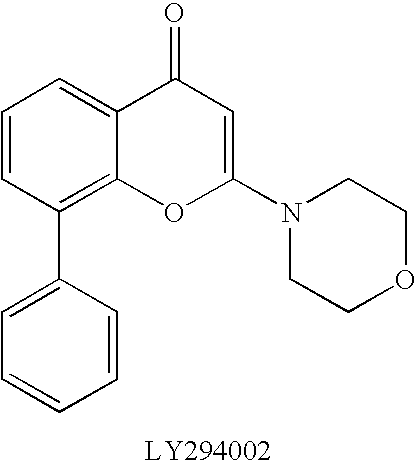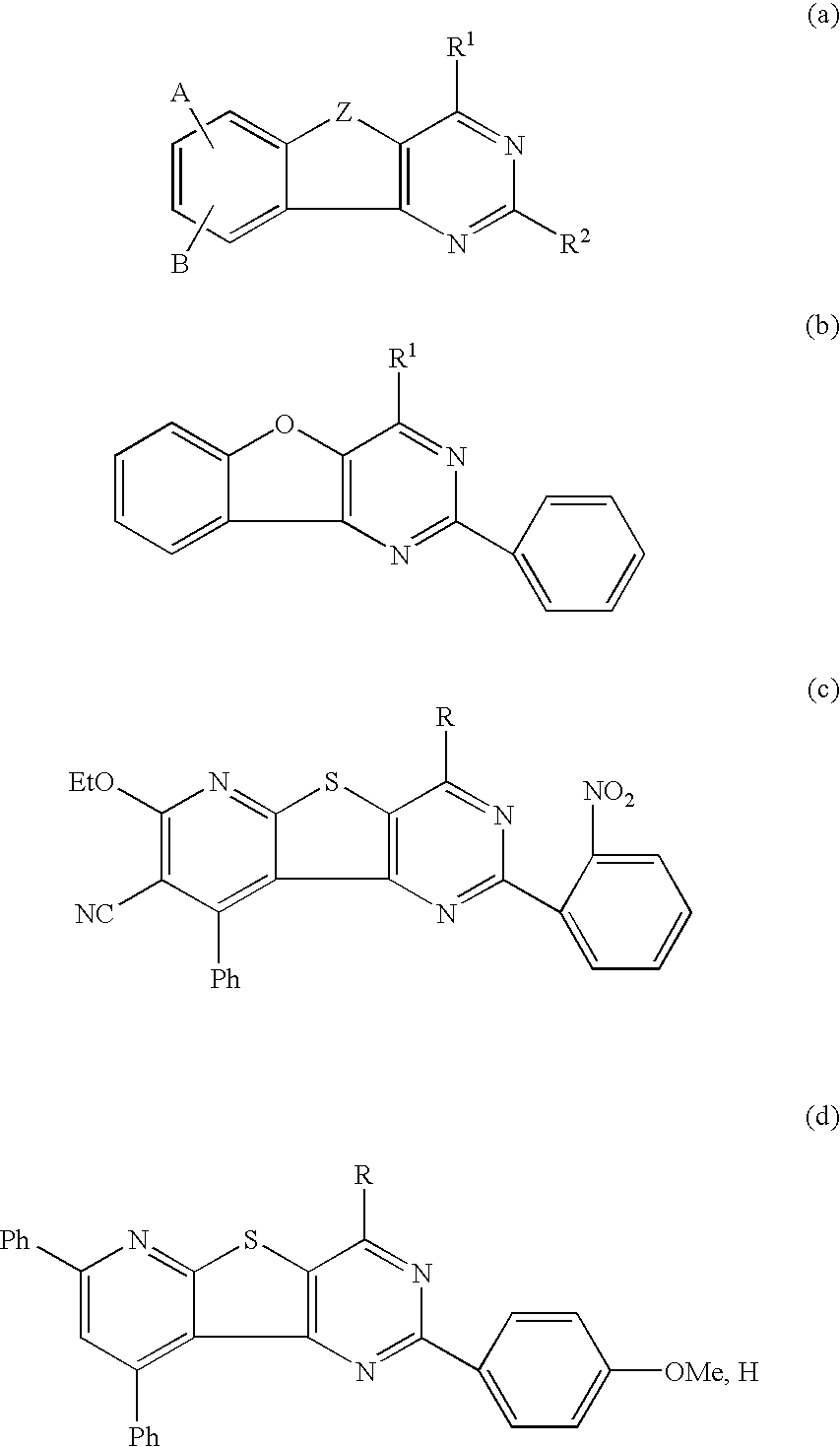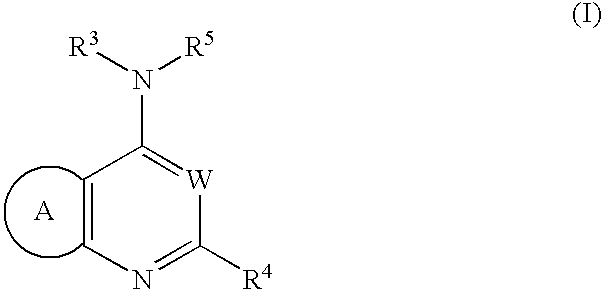wherein: R1 represents -a lower alkyl, -a lower alkenyl, -a lower alkynyl, -a cycloalkyl, -an aryl which may have one or more substituents, -a heteroaryl which may have one or more substituents, -a halogen, —NO2, —CN, -a halogenated lower alkyl, —ORb, —SRb, —SO2-Rb, —SO—Rb, —COORb, —CO—Rb, —CONRaRb, —SO2NRaRb, —NRaRb, —NRa—CORb, —NRa—SO2Rb, —O—CO—NRaRb or —NRaCO—COORb, —CO-a nitrogen-containing saturated heterocyclic group, —CONRa-a lower alkyl-ORb, —CONRa-a lower alkylene-ORb, —O-a lower alkylene-NRb, —O-a lower alkylene-O-a lower alkylene-ORb, —O-a lower alkylene-NRaRb, —O-a lower alkylene-O-a lower alkylene-NRaRb, —O-a lower alkylene-NRc-a lower alkylene-NRaRb, —NRc-a lower alkylene-NRaRb, —N(a lower alkylene-NRaRb)2, —CONRa—ORb, —NRa—CO—NRbRc, or —OCORb; each of R2 and R3, which may be the same or different, represents —H or -a lower alkyl, or R2 and R3 are combined together with the N atom adjacent thereto to form a nitrogen-containing saturated heterocyclic group as —NR2R3 which may have one or more substituents; Ra and Rc, which may be the same or different, represent —H or -a lower alkyl; Rb represents —H, -a lower alkyl, a cycloalkyl, an aryl which may have one or more substituents or a heteroaryl which may have one or more substituents; n represents 0, 1, 2 or 3; X represents N or CH; Y represents O, S or NH; and, R4a represents -(an aryl which may have one or more substituents), -a lower alkylene-(an aryl which may have one or more substituents), -a lower alkenylene-(an aryl which may have one or more substituents), -a lower alkynylene-(an aryl which may have one or more substituents), -(a cycloalkyl which may have one or more substituents), -(a cycloalkenyl which may have one or more substituents), -a lower alkylene-(a cycloalkyl which may have one or more substituents), -a lower alkenylene-(a cycloalkyl which may have one or more substituents), -a lower alkylene-(a nitrogen-containing saturated heterocyclic group which may have one or more substituents), -a lower alkenylene-(a nitrogen-containing saturated heterocyclic group which may have one or more substituents), -(a heteroaryl which may have one or more substituents), -a lower alkylene-(a heteroaryl which may have one or more substituents), or -a lower alkenylene-(a heteroaryl which may have one or more substituents); with the proviso that the following compounds are excluded: (1) compounds in which X represents N, Y represents S, n is 3 and R1 represents a combination of —CN, —OEt and phenyl, and R4a represents 2-nitrophenyl; (2) compounds in which X represents CH, and R4a represents -(a heteroaryl which may have one or more substituents); (3) compounds in which X represents CH, Y represents O, n is 0 and R4a represents an unsubstituted phenyl; and (4) compounds in which X represents N, Y represents S, n is 2, R1 represents an unsubstituted phenyl and R4a represents 4-methoxyphenyl or an unsubstituted phenyl. The same applies hereinbelow.
[wherein: B represents a benzene ring, or a 5- or 6-membered monocyclic heteroaryl containing 1 to 2 hetero atoms selected from O, S and N; R1 represents -a lower alkyl, -a lower alkenyl, -a lower alkynyl, -a cycloalkyl, -an aryl which may have one or more substituents, -a heteroaryl which may have one or more substituents, -a halogen, —NO2, —CN, -a halogenated lower alkyl, —ORb, —SRb, —SO2-Rb, —SO—Rb, —COORb, —CO—Rb, —CONRaRb, —SO2NRaRb, —NRaRb, —NRa—CORb, —NRa—SO2Rb, —O—CO—NRaRb, —NRaCO—COORb, —NRaCOORb, —NRaCO-a lower alkylene-an aryl, —NRa—SO2-a lower alkylene-an aryl, —NRa-a lower alkylene-an aryl, -a lower alkylene-ORb, -a lower alkylene-NRaRb, —CO-a nitrogen-containing saturated heterocyclic group, —CONRa-a lower alkylene-ORb, —CONRa-a lower alkylene-NRcRb, —CONRa-a lower alkylene-a nitrogen-containing saturated heterocyclic group, —O-a lower alkylene-ORb, —O-a lower alkylene-−NRaRb, —O-a lower alkylene-a nitrogen-containing saturated heterocyclic group, —O-a lower alkylene-O-a lower alkylene-ORb, —O-a lower alkylene-O-a lower alkylene-NRaRb, —O-a lower alkylene-NRc-a lower alkylene-NRaRb, —NRc-a lower alkylene-NRaRb, —N(a lower alkylene-NRaRb)2, —CONRa—ORb, —NRa—CO—NRbRc, or —OCORb; R2 and R3 are combined together with the N atom adjacent thereto to form —NR2R3 which is a nitrogen-containing saturated heterocyclic group which may have one or more substituents; Ra and Rc, which may be the same or different, represent —H or -a lower alkyl; Rb represents —H, -a lower alkyl, -a cycloalkyl, -(an aryl which may have one or more substituents) or -(a heteroaryl which may have one or more substituents); n represents 0,1, 2 or 3, whereas n represents 1, 2 or 3 when B represents a benzene ring; W represents N or CH; and, R4b represents -(an aryl which may have one or more substituents), -a lower alkylene-(an aryl which may have one or more substituents), -a lower alkenylene-(an aryl which may have one or more substituents), -a lower alkynylene-(an aryl which may have one or more substituents), -(a cycloalkyl which may have one or more substituents), -(a cycloalkenyl which may have one or more substituents), -a lower alkylene-(a cycloalkyl which may have one or more substituents), -a lower alkenylene-(a cycloalkyl which may have one or more substituents), -a lower alkylene-(a nitrogen-containing saturated heterocyclic group which may have one or more substituents), -a lower alkenylene-(a nitrogen-containing saturated heterocyclic group which may have one or more substituents), -(a heteroaryl which may have one or more substituents), -a lower alkylene-(a heteroaryl which may have one or more substituents), or -a lower alkenylene-(a heteroaryl which may have one or more substituents); with the proviso that the following compounds are excluded: (1) 4-(4-morpholinyl)-2-phenylpyrido[2,3-d]pyrimidine, (2) 4-(4-morpholinyl)-2-phenylpyrido[2,3-d]pyrimidin-7(1H)-one, (3) 4-(4-morpholinyl)-2-pheny-6-quinazolinol and 6-methoxy-4-(4-morpholinyl)-2-phenyquinazoline, (4) 2,4-diamino-6-phenyl-8-piperidinopyrimido [5,4-d]pyrimidine, (5) compounds in which B represents a benzene ring, W represents N, n is 2 or 3, existing R1's all represent —OMe, and R4b is an unsubstituted phenyl or a phenyl which is substituted by 1 to 3 substituents selected from -halogen, —NO2, -a lower alkyl, —O-a lower alkyl, -a hanogenated lower alkyl and —CONRaRc, (6) compounds in which B represents a benzene ring, W represents N, n is 1, R1 represents -halogen or -a lower alkyl, and R4b represents -(imidazolyl whch may have one or more substituents), (7) compounds in which B represents a thiophene ring, and W represents CH, (8) compounds in which B represents an imidazole ring, and W represents N, (9) compounds in which B represents a pyridine ring, and R4b represents an unsubstituted phenyl, an unsubstituted pyridyl, or -a lower alkylene-(a nitrogen-containing saturated heterocyclic group which may have one or more substituents), (10) compounds in which B represents a pyrazine ring, and R4b represents an unsubstituted phenyl, or a benzyl, (11) compounds in which B represents a benzene ring, and R4b represents a styryl or 2-(5-nitro-2-furyl)vinyl, and (12) compounds in which B represents a benzene ring, W represents CH, and R2 and R3 are combined together with the N atom adjacent thereto to form -(piperidinyl which may have one or more substituents) or -(piperazinyl which may have one or more substituents). The same applies hereinbelow.
Further teaching of the present invention provides a method to treat disorders (especially cancers) which are associated with PI3K, wherein the method comprises of administering to a patient an effective amount of a fused heteroaryl derivative of formula (I), (Ia) or (Ib) above or a salt thereof as well as a use of said fused heteroaryl derivative or a salt thereof for producing a medicament (especially a carcinostatic agent) which inhibit PI3K.
 Login to View More
Login to View More 


